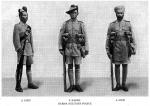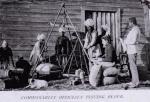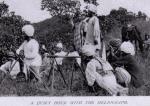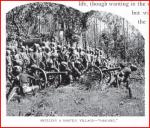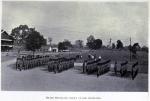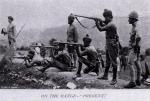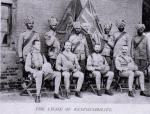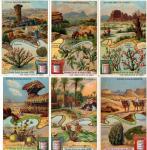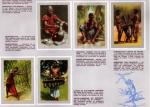
Harry Fecitt
Past Contributor-
Posts
324 -
Joined
-
Last visited
-
Days Won
6
Content Type
Profiles
Forums
Blogs
Gallery
Events
Store
Everything posted by Harry Fecitt
-
Brian - Posts 15 & 17. Greetings and it's good news that you are writing about the SAMCC. Do you need a copy of the court martial proceedings of Lance Sjt F. Harris SAMCC who witnessed the death of Colonel Fairweather before himself being captured by Wintgens? If you do then please send a Personal Message with your email address. Harry
-
I guess late 1940s but I may be wrong. Bruce may have stayed on in Pakistan after Partition. He wrote: http://archive.org/details/waziristan193619031345mbp If you can find his obituary then you should be able to date it. I found it on the RGS website under photos when I searched for C.E. Bruce. It ls about the only photo of his (and there are other police ones) where the RGS watermark doesn't show. Harry
-
Tony If you send me a message with a email address in it then I'll send you a digital copy of the only 1 KAR war history that I have come across. It doesn't mention many Askari names but it gives brief histories of all the 1 KAR battalions in the Great War. Harry
-
Tony Habari za Asubuhi What makes you sure that these are 1 KAR medals? If they are then you might be interested in these articles: http://www.kaiserscross.com/188001/344964.html http://www.kaiserscross.com/188001/372664.html http://www.kaiserscross.com/188001/352801.html 2 KAR was administered from Mbgathi, Nairobi. However if your man transferred into 1 KAR when 2 KAR was disbanded in 1919 or if he was discharged, providing that he was in Nyasaland then he would have received his medals through the 1 KAR depot at Zomba. For a short 2 KAR history up into 1918 take a glance at: http://gweaa.com/?p=112 http://gweaa.com/?p=113 http://www.kaiserscross.com/188001/447622.html http://www.kaiserscross.com/188001/433401.html http://www.kaiserscross.com/188001/452201.html http://www.kaiserscross.com/188001/255601.html Harry
-
Shelling a hostile village - loading Then here is another book that you definitely will want to download - the reading isn't difficult as it is full of photos! There are some classic shots for the Empire historians - eg: one of the Lushai Frontier Police. The Image of War or Service on the Chin Hills (1894) by Surgeon-Captain A.G.E. Newland, Indian Medical Service, 2nd Burma Battalion. http://archive.org/details/imageofwarorserv00newlrich
-
Demonstrating fire positions. The bugler is there to sound 'Commence Firing' or 'Cease Firing'. He also raises the flag when firing is suspended. A useful book for understanding the formation of the BMP is: The Pacification of Burma by Sir Charles Haukes Todd Crosthwaite. It is freely downloadable here: http://archive.org/details/pacificationofbu00crosrich XXXXXXXX Thanks for the comments on drafts, obviously drafts were formed by class to reflect the class structure of the unit being reinforced.
-
Indian General Service Medal to a British Army officer serving with the BMP I.G.S. 1854, 2 bars, Burma 1885-7, Kachin Hills 1892-3 to Lieut. E.L. Williams, Liverpool Regiment, wounded Burma 19/6/1886 during an affair with Dcoits at Nepah, near Menboo, killed in action Kachin Hills, 11 February, 1893. From ‘Frontier and Overseas Expeditions from India, The Kachins’ ‘Early in February news was received at Namhkam of the gathering of malcontents on the Chinese frontier to the north-east, and fifty men were sent to occupy Se-Lan, thirteen miles from Namhkam. Not withstanding this precaution a large number of marauders crossed the Wanteng and settled at Man Hang, a Kachin village in the hills above Muse. A patrol of thirty five men, under a native officer, was shortly afterwards attacked at Muse by the inhabitants of Man Hang, who were, however, beaten off with the loss of thirteen killed. In punishment for this attack a party of seventy five military police under Lieutenant Williams, was sent to burn the village of Man Hang. The village had been successfully captured when Lieutenant Williams was killed by a chance shot, and the party then retired without burning the place or destroying the stockades.’ Ernest Llewellyn Williams, b. 1866 of Widdecombe vicarage, Ashburton, Devon. Commd. Liverpool Regt. 1885, Asst. Commandant Burma Military Police Battalion, Mandalay, 1892. With PRO copies of the telegram informing his father of him being killed in action Kachin Hills and a copy of the acknowledgement. Kachin Hills clasp loose on ribbon (courtesy of British Medals website) Two things are illustrated here: a. British Army officers could apply for secondment to the BMP b. The type of operations that the BMP had been hired to do
-
Menin Gate Memorial to Burma Military Police Thank you for the comment Michael. Looking at the Menin Gate Memorial above you are right for France & Flanders. However looking at the three following images from East Africa a different picture emerges. British & Indian Memorial, Nairobi, Kenya British & Indian Memorial, Dar Es Salaam, Tanzania, a British & Indian Memorial, Dar Es Salaam, Tanzania, b
-
NCOs representing the different classes recruited for the Burma Military Police In 1886 the British authorities wished to reduce the cost of garrisoning Upper Burma and the Burma Military Police was raised to replace regular Indian Army units. European Officers were seconded from the Indian Army (and sometimes from the British Army) and Indian Officers and men were recruited from the Punjab and Nepal. Favoured classes were Gurkhas, Pathans, Garwhalis, Punjabi Muslims, Kumaonis and Dogras. Pensions could be received after 15 years service. Non-Indians were first recruited in 1909 when Chins were accepted in some units. This was followed by the recruitment of Kachins and other hill tribes, with very few Burmans being enlisted. Another definition of duties, but for frontier battalions rather than those in the large towns, was: The duties of the force on the frontier are : Policing the frontier. Repelling local raids. Providing escorts to civil officers. Furnishing columns for such work as the slave releasing in the Triangle and Hukawng valley and punitive columns. Intelligence.
-
'The Burma Military Police is a semi-military force intended to perform at the cheapest possible cost : a. Frontier Watch and Ward duties b. Deal with minor insurrections amongst the less civilized hill tribes c. transport treasure d. guard and transport long term prisoners to and from jail. Thus writes Barry Renfrew in his sparse coverage of the Burma Military Police in his book Forgotten Regiments : Regular and Volunteer Units of the British Far East. I am researching the Burma Military Police and invite other interested Members to contribute with information, images of and citations for awards to the regiment, insignia, uniforms and anything else. As the regiment fought serious battles and supplied drafts to various theatres during the Great War I feel that the topic is better suited to this forum rather than the colonial police forum. I will put up the images I have such as the above photograph of the officers and colours of the 9th Burmah Battalion plus notes that I have collated. There are five more photos that I have extracted from an 1896 edition of The Navy and Army Illustrated. On the very interesting web page: http://www.britishempire.co.uk/forces/armyunits/burma/bmp.htm a book: The History of the Burma Military Police by Colonel S.F.C. Peile is shown. Does any Member know of the whereabouts of a copy of this book? Harry
-
Corps of Guides
Harry Fecitt replied to Chris Boonzaier's topic in Great Britain: Militaria: Badges, Uniforms & Equipment
The 1st Bn Guides Infantry was defending ground named 'The Sisters' alongside 1st/8th Gurkhas, therefore it is likely that the Gurkha volunteers came from the 1st/8th. However the Gurkha who beheaded Winter's adversary was Sepoy Mardani of the 1st Bn Guides Infantry. 1st Bn Guides Infantry had many Nepalese in its ranks, as did some other units, but they were all referred to as Gurkhas. (Source: History of the Guides 1846-1922, (Anonymous writer), Naval & Military Press have reprinted it. Harry -
Az Greetings & Happy New Year The Uganda Police Service Battalion (UPSB) was a totally different unit from the East Africa Police Service Battalion (which was manned by British East Africa - now Kenya - policemen). I'll get some facts together and produce an article on the UPSB later this month. So far I cannot trace a contact that might have involved Lt Maturin, so perhaps he died of disease on the line of communication from the Kagera Front (in today's Tanzania) to Entebbe in Uganda. Harry Harry
-
http://www.bbc.co.uk...africa-12689342 Interesting news perhaps for certain types of weapons collectors.
-
A set of 6 cards titled Desert Flora issued by Liebig Extract of Meat Company. Between 1872 and 1974 Liebig issued nearly 2,000 sets on a vast array of subjects. Some of the older sets display very attractive artwork. The texts are in continental languages. Liebig cards are not particularly popular in the UK, but even so sets of 6 cards are usually priced between 10 and 30 pounds sterling. They can be purchased much more cheaply in collectors' shops in Brussels, Belgium. Prices for all cards and silks mentioned in this thread Two main dealers in the UK offer catalogues. They are: Murray Cards (International) Ltd and The London Cigarette Card Company Ltd; both have websites. Prices mentioned in this thread are based on catalogue prices which include Value Added Tax (VAT). Small-scale dealers you meet at card fairs will not be VAT registered so immediately make sure that you are paying 20% less than catalogue prices, and then bargain for at least another 20% off. With silks you may find real bargains. At auctions you may find that there are low reserve prices, and so low bids can be successful. But always inspect cards and silks for condition before buying or bidding. I will only post sporadically on this thread now, but I hope that it has been interesting and informative to Members who may not have known much about the hobby. Harry
-
Here's part of an album page from Belgium, with the text in French & Flemish. The set of 225 cards is titled Our Congo and was issued in 1948. I was lucky to find the album in a shop in Antwerp a few years ago. The cards depict tribal characteristics, flora & fauna, economic development and traditional rural crafts and occupations.

